Key Takeaways
1. Master the fundamentals of Python for data science
Python has several features that make it well suited for learning (and doing) data science.
Python essentials. Python's simplicity and extensive library ecosystem make it an ideal language for data science. Key concepts include data structures (lists, dictionaries, sets), control flow (if statements, loops), and functions. The language's readability and ease of use allow data scientists to focus on problem-solving rather than complex syntax.
Data manipulation libraries. Familiarize yourself with essential libraries such as NumPy for numerical computing and pandas for data manipulation. These tools provide efficient data structures and operations for working with large datasets. Learn to:
- Load and save data in various formats
- Clean and preprocess data
- Perform basic statistical operations
- Reshape and merge datasets
Visualization tools. Master data visualization libraries like Matplotlib and Seaborn to create informative and visually appealing plots. Understand how to:
- Create basic plots (line, scatter, bar)
- Customize plot aesthetics
- Create subplots and multi-panel figures
- Visualize high-dimensional data
2. Understand and apply core statistical concepts
Statistics is important. (Or maybe statistics are important?)
Descriptive statistics. Learn to summarize and describe data using measures of central tendency (mean, median, mode) and dispersion (variance, standard deviation). Understand the importance of data distribution and how to visualize it using histograms and box plots.
Inferential statistics. Master key concepts in statistical inference:
- Probability distributions (normal, binomial, Poisson)
- Hypothesis testing and p-values
- Confidence intervals
- Regression analysis
Statistical pitfalls. Be aware of common statistical errors and misinterpretations:
- Correlation vs. causation
- Simpson's paradox
- Survivorship bias
- Multiple comparisons problem
3. Leverage linear algebra for data manipulation and analysis
Linear algebra is the branch of mathematics that deals with vector spaces.
Vector and matrix operations. Understand fundamental linear algebra concepts and their applications in data science:
- Vector addition and scalar multiplication
- Matrix multiplication and transposition
- Eigenvectors and eigenvalues
- Singular value decomposition (SVD)
Applications in data science. Apply linear algebra techniques to solve various data science problems:
- Dimensionality reduction (e.g., Principal Component Analysis)
- Feature extraction and transformation
- Solving systems of linear equations
- Implementing machine learning algorithms (e.g., linear regression, neural networks)
4. Implement machine learning algorithms from scratch
Machine learning is really hot right now, and in this chapter we barely scratched its surface.
Supervised learning. Understand and implement fundamental supervised learning algorithms:
- Linear regression
- Logistic regression
- Decision trees
- K-nearest neighbors
- Support Vector Machines (SVM)
Unsupervised learning. Explore unsupervised learning techniques for discovering patterns in data:
- K-means clustering
- Hierarchical clustering
- Principal Component Analysis (PCA)
- Gaussian Mixture Models
Model evaluation. Learn techniques for assessing and improving model performance:
- Cross-validation
- Regularization
- Feature selection and engineering
- Hyperparameter tuning
5. Explore advanced techniques in neural networks and deep learning
Deep learning originally referred to the application of "deep" neural networks (that is, networks with more than one hidden layer), although in practice the term now encompasses a wide variety of neural architectures.
Neural network fundamentals. Understand the basic building blocks of neural networks:
- Neurons and activation functions
- Feedforward and backpropagation
- Gradient descent and optimization algorithms
Deep learning architectures. Explore various deep learning models and their applications:
- Convolutional Neural Networks (CNNs) for image processing
- Recurrent Neural Networks (RNNs) for sequence data
- Long Short-Term Memory (LSTM) networks
- Generative Adversarial Networks (GANs)
Deep learning frameworks. Familiarize yourself with popular deep learning libraries:
- TensorFlow
- PyTorch
- Keras
6. Utilize natural language processing for text analysis
Natural language processing (NLP) refers to computational techniques involving language.
Text preprocessing. Learn essential techniques for preparing text data:
- Tokenization
- Stemming and lemmatization
- Stop word removal
- Part-of-speech tagging
Feature extraction. Understand methods for converting text into numerical features:
- Bag-of-words representation
- TF-IDF (Term Frequency-Inverse Document Frequency)
- Word embeddings (e.g., Word2Vec, GloVe)
NLP applications. Explore common NLP tasks and techniques:
- Sentiment analysis
- Named Entity Recognition (NER)
- Topic modeling
- Machine translation
- Question answering systems
7. Apply data science techniques to real-world problems
Throughout the book, we'll be investigating different families of models that we can learn from data.
Problem formulation. Learn to translate business problems into data science tasks:
- Identify key stakeholders and their needs
- Define clear objectives and success metrics
- Determine appropriate data sources and collection methods
Data pipeline development. Build robust data pipelines for real-world applications:
- Data ingestion and storage
- Data cleaning and preprocessing
- Feature engineering and selection
- Model training and evaluation
- Deployment and monitoring
Ethical considerations. Understand the ethical implications of data science:
- Data privacy and security
- Bias and fairness in machine learning models
- Transparency and interpretability of algorithms
- Responsible AI development and deployment
Last updated:
FAQ
What's Data Science from Scratch by Joel Grus about?
- Focus on Fundamentals: The book emphasizes understanding data science concepts from the ground up, using Python. It covers essential topics like statistics, linear algebra, and machine learning.
- Hands-On Approach: Readers are encouraged to implement data science techniques themselves, fostering a deeper appreciation for the underlying principles.
- Real-World Applications: Practical examples and real datasets are used to illustrate concepts, making the material relatable and applicable to real-world problems.
Why should I read Data Science from Scratch by Joel Grus?
- Comprehensive Learning: Ideal for beginners, the book provides a solid foundation in data science without requiring prior knowledge.
- Python-Centric: It introduces Python programming alongside data science concepts, offering a dual learning experience.
- Updated Content: The second edition includes new material on deep learning, statistics, and natural language processing, reflecting the latest trends.
What are the key takeaways of Data Science from Scratch by Joel Grus?
- Understanding Data Science: Defines data science as the intersection of hacking skills, math and statistics knowledge, and substantive expertise.
- Building from Scratch: Emphasizes the importance of building algorithms from scratch to demystify complex concepts.
- Importance of Clean Code: Stresses writing clean, maintainable code, essential for effective data science work.
What is the Bias-Variance Tradeoff in Data Science from Scratch by Joel Grus?
- Model Complexity: Describes the balance between minimizing bias and variance, crucial for building effective models.
- Overfitting vs. Underfitting: Explains how high bias may lead to underfitting, while high variance may cause overfitting.
- Practical Implications: Suggests adding features to reduce bias and simplifying models to reduce variance.
How does Data Science from Scratch by Joel Grus define Data Science?
- Definition: Describes data science as "the sexiest job of the 21st century," emphasizing its growing importance.
- Core Skills: Highlights the intersection of hacking skills, math and statistics knowledge, and substantive expertise.
- Real-World Examples: Provides examples of data science applications, such as predicting customer behavior.
What is the Central Limit Theorem as explained in Data Science from Scratch by Joel Grus?
- Definition: States that the distribution of the sample mean approaches a normal distribution as the sample size increases.
- Implications for Data Science: Allows inferences about population parameters based on sample statistics.
- Practical Application: Illustrates the theorem with examples, showing its role in statistical methods like regression analysis.
What is Gradient Descent in Data Science from Scratch by Joel Grus?
- Optimization Technique: An algorithm used to minimize model error by iteratively adjusting parameters.
- Learning Rate: Requires a learning rate to determine step size towards the minimum, crucial for convergence.
- Applications: Used in various models, including linear regression and neural networks.
How does Data Science from Scratch by Joel Grus explain Naive Bayes?
- Spam Classification: Uses Naive Bayes as an example of a simple yet effective classification technique.
- Independence Assumption: Assumes feature independence given the class label, simplifying probability computation.
- Implementation: Provides a step-by-step guide to implementing a Naive Bayes classifier.
What is the significance of R-squared in Data Science from Scratch by Joel Grus?
- Goodness of Fit: Indicates how well independent variables explain the variability of the dependent variable.
- Limitations: Can be misleading, especially in models with many predictors, as it doesn't account for model complexity.
- Practical Use: Emphasizes using R-squared alongside other metrics for comprehensive model performance assessment.
What is the importance of linear regression in Data Science from Scratch by Joel Grus?
- Foundational Technique: A simple and widely used statistical technique, serving as a building block for complex models.
- Predictive Modeling: Used for predictive modeling, allowing informed decisions based on data.
- Implementation from Scratch: Provides a detailed explanation of implementing linear regression in Python.
How does Data Science from Scratch by Joel Grus approach data visualization?
- Importance of Visualization: Emphasizes that effective visualization is crucial for understanding and communicating insights.
- Matplotlib Library: Introduces Matplotlib for creating visualizations in Python, aiding in data presentation.
- Examples and Best Practices: Offers examples of good and bad visualizations, teaching clear and informative graphic creation.
How does Data Science from Scratch by Joel Grus address data ethics?
- Importance of Ethics: Discusses the ethical implications of data science, emphasizing responsibility in considering the impact of work.
- Real-World Examples: Provides examples of data misuse and ethical dilemmas, illustrating the importance of ethical considerations.
- Encouraging Thoughtful Discussion: Encourages readers to engage in discussions about data ethics and think critically about their work.
Review Summary
Data Science from Scratch receives mixed reviews. Many praise its practical approach and hands-on examples for beginners, appreciating the author's clear explanations and engaging writing style. The book's focus on building algorithms from scratch is seen as beneficial for understanding fundamentals. However, some critics find it too basic for experienced practitioners or lacking in-depth explanations. Readers appreciate the wide range of topics covered but note that the code examples may not be practical for real-world applications. Overall, it's recommended for those new to data science seeking a practical introduction.
Similar Books
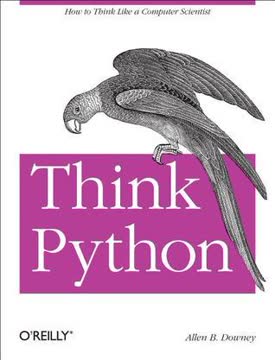

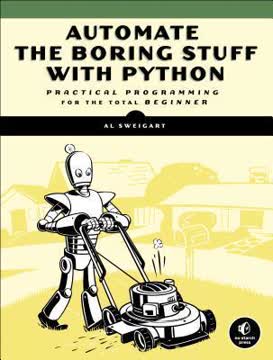
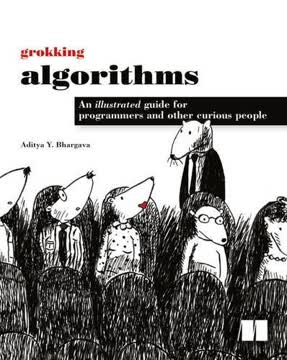
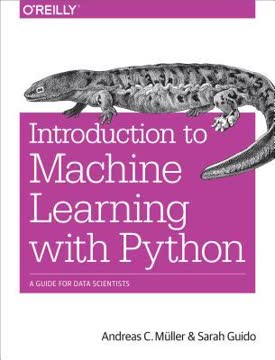
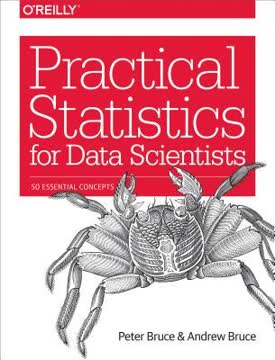
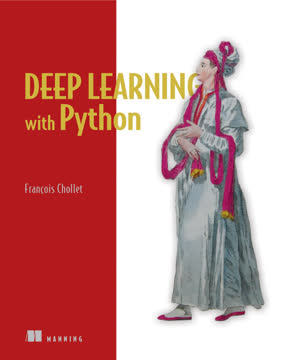

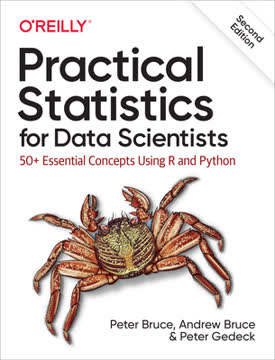
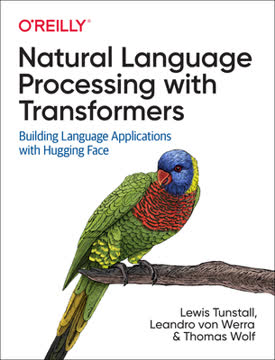
Download PDF
Download EPUB
.epub digital book format is ideal for reading ebooks on phones, tablets, and e-readers.




